“How to lay tile that looks like wood?” Is that even a hot topic to write an article about? Well, the truth is that wood-look ceramic tiles have become increasingly popular in recent years. And it’s easy to see why. As much class and sophistication wood flooring can bring to a home, the truth is that this is not an easy to maintain material. If wood is not refinished regularly, it tends to scratch and gets an ugly wear pattern. It’s not waterproof, and any accidental spills can cause significant damage and permanent stains. Moreover, wood-like tiles don’t dent, and creak as real wood flooring does.
There’s just one problem, though: installing wood look tile comes with some unique challenges.
So, here’s how to lay tile that looks like wood.

What You Need to Know about Wood Tile
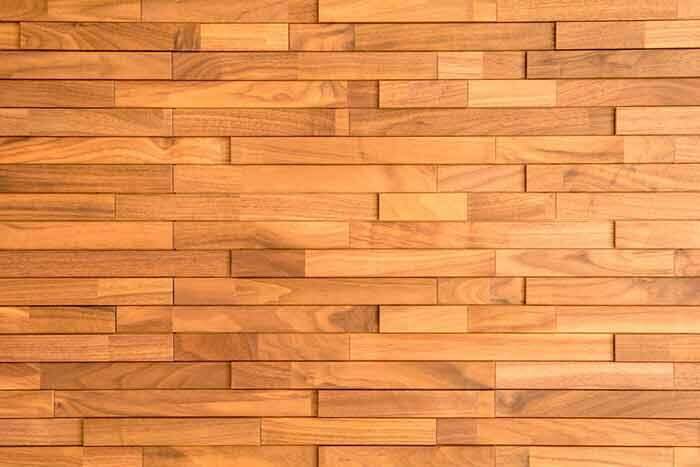
Although design and specifications may vary, wood look tiles have one thing in common: they are a durable and easy to maintain alternative to traditional hardwood. So, given their aesthetic appeal and benefits, the demand for wood-look porcelain tile installation has probably increased in recent years.
One thing you may have noticed about wood tile is that it’s a bit more troublesome than other types of ceramic tiles. Here’s why installing wood-look tile can be so frustrating.
Wood-look Tile Is Not Flat
You’ve probably realized this already, but wood tiles are not flat. They sure look so, but if you look closely, you will notice that the centre is higher than it should be. That’s why when you install wood tile flooring in an offset pattern, the centre is next to the end of the next tile, which creates lippage – or otherwise known as the most frustrating problem an installer has to deal with during a project. But don’t worry, we’ll talk about how to lay tile that looks like wood without lippage, in a second.
Reduce Lippage by Prepping the Floor Surface Correctly
You know that when it comes to installing tile flooring, flatness is the most important aspect. You also know that if you set the tiles at different levels, you risk creating lippage. The question is: how can you avoid this problem when wood-look tiles have high centers?
 Source: Prestige Floors
Source: Prestige Floors
As a rule of thumb, make sure that the subfloor has no more than a 3mm deviation in 3 metres. In other words, the floor has to be perfectly flat. It may seem a bit unrealistic to make the surface perfectly flat, but there are some tips you can follow if you want to learn how to lay tile that looks like wood.
Find Any Dips or Peaks
Wood-look tiles are already uneven, so any dips or peaks in the floor surface will accentuate the lippage even further. Using a chalk line, stretch it across the room and look for any variations in the floor’s height. Mark them with tape or a pencil.
Calculate the Depth of the Dip
Use your trowel to determine how deep the dip in the tile is. If it’s deeper than your trowel notch, then use a bigger one.

Clean the Surface Area
Clear the floor of any debris and dirt. Vacuum the floor or use water and a sponge to clean the surface area and remove dust particles.
Ensure You Get the Right Mortar Consistency
The secret to a successful tile installation, whether we’re talking about ceramic or wood-look tile flooring, is getting the right mortar consistency. A perfect blended mortar mix will help you achieve a strong bond and, therefore, a long-lasting installation.
We’re not going to hold a plea about how cement works and cures. You know that already. But, we’re going to give you hopefully some new tips that could help you get the right mortar thickness. For example, you should start by pouring water into the bucket first. That way, you reduce the number of airborne particles. We’ve seen a lot of installers doing it the other way around. But, when you add the powder first, then the water, it will be difficult to mix it properly.
Another tip that can make a big difference is following the recommended amount of time to mix mortar. Sure, stirring for ten minutes can seem like a lot, but it will ensure the best results.
[TIP: Are you mixing adhesive properly? Read our pro guide for getting the right adhesive mix]
Level the floor
If the subfloor is uneven, use of a levelling compound would be advised to ensure the flattest surface possible to tile onto.
Use a Tile Levelling System
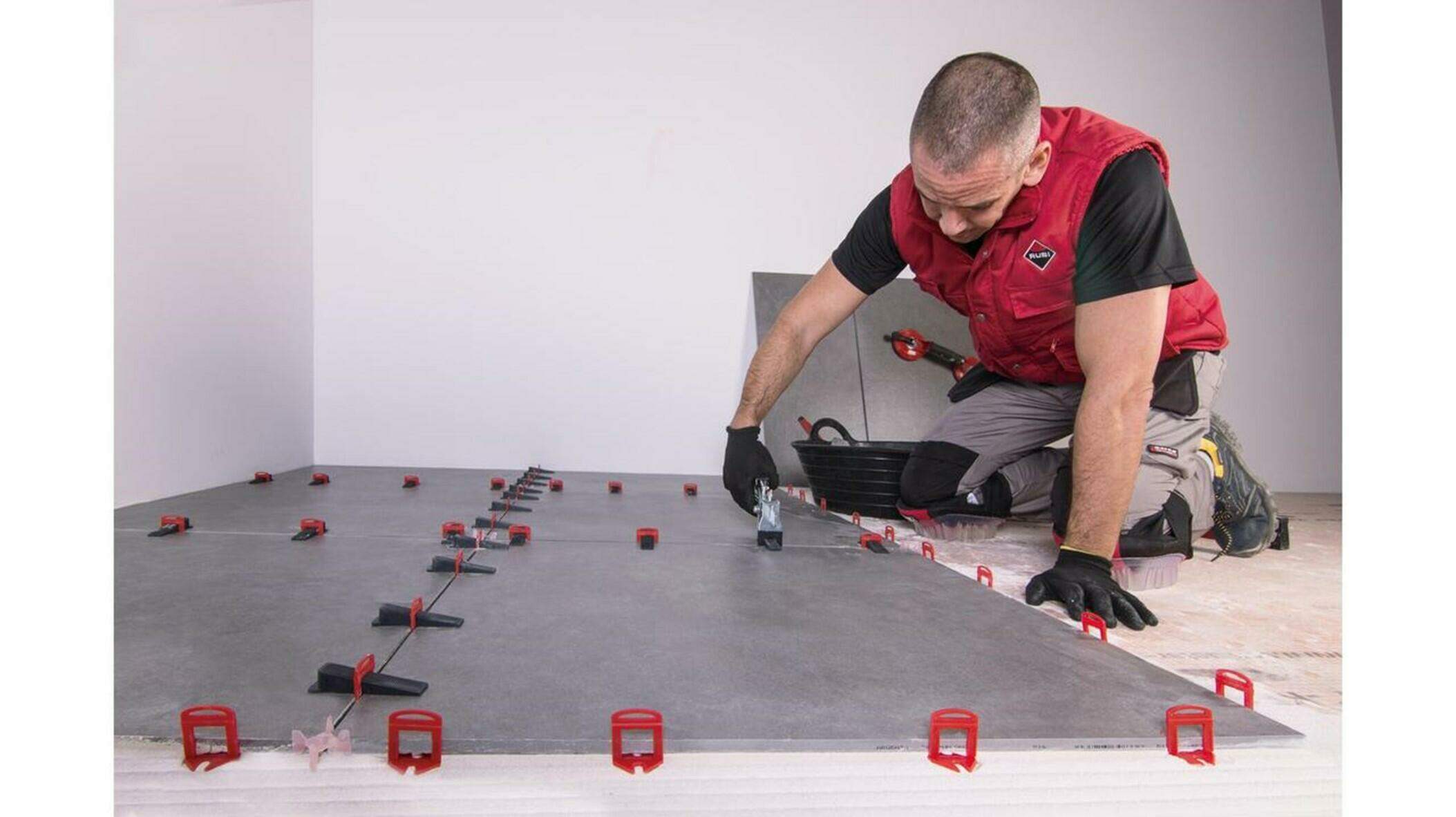
Making sure that there are no peaks or valleys in the floor surface is paramount for any successful tile installation process. But, in the case of wood tiles, even when the floor is perfectly flat, the final result can still have a bit of lippage.
A tile levelling system can help you manage this problem better than other similar tools. Due to its design, it will interlock the tiles, ensuring that the surface remains flat while the mortar dries.
Tile spacers are another essential tool that can help you achieve that perfect finish in any wood look tile flooring.
Avoid Doing a Full Offset
As mentioned already, offset patterns are the most problematic. But, what can you do when the client has his mind set on an offset design? Well, you can at least avoid doing a 50% offset, where the middle of the wood-look tile is perfectly aligned with the grout joint of the next row.
That’s surefire way to get the maximum level of lippage.
So, unless the client is dead set on this type of offset pattern, set the limit at 33% or the tile manufacturers recommendation. In fact, the smaller the offset, the better the chances of avoiding lippage problems when installing wood tile flooring.
How to Lay Tile That Looks Like Wood: Tips and Tricks
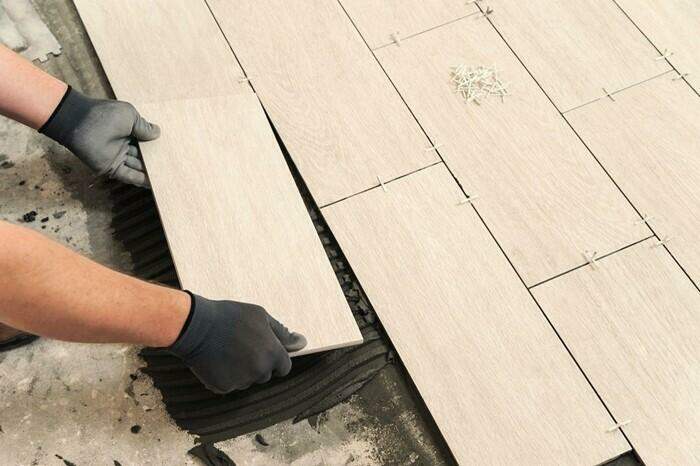
So, you’ve filled every dip and smoothened every peak in the floor surface and made it as flat as possible. You even have a trusted tile levelling system to help you during the installation process.
What should the next step be, you might ask yourself?
Here are some tips and tricks that can help you learn how to lay tile that looks like wood.
Choose the Right adhesive
A medium bed adhesive and a 12mm x 12mm notch trowel are ideal for large format tiles. Sure, you will have to use more adhesive and, sure, you will probably have to choose a premium brand, but this is not the time to be stingy. The right tools and materials can not only ensure proper wood-look tile installation, but they will also make your job easier.
Pay Attention to the Orientation of the Tiles
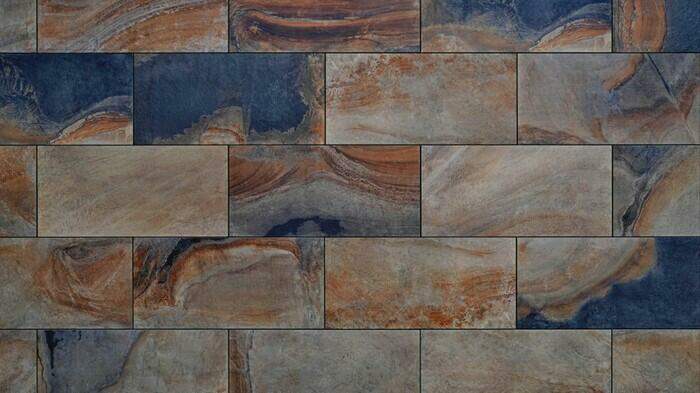
One simple tip that can aid you in the installation process is running wood-look tile across the room first. Start with two rows and then run them from one end to the other of the room. Use a tile levelling system to make sure that each row is perfectly flat.
Once you ensure that these first rows are aligned and flat, you can continue your work, completing one row at a time. Take your time – wood-look tile is not about speed but scrupulousness.
Consider the Grout Joint Size
We’ve seen a lot of professional installers who use a thin grout joint when installing wood-like tile, and then a blending colour that mimics real hardwood. But let’s just think about this approach for a second.
If the tiles are not levelled evenly, then putting just a small amount of grout joint is only going to make the lippage more evident than it already was. A wider grout joint, on the other hand, can help you minimize the asymmetry between tiles.
Our recommendation is that you use a grout joint that is at least 2mm. Keep in mind that this is the lowest you should go. Sure, you can go lower than that, but an extremely thin grout joint is only going to cause your problems during installation.
Conclusion
Wood-like tile flooring is the new hot trend. But, if you’ve worked with this type of ceramic tile before, you know how demanding it can be. Hopefully, this guide about how to lay tile that looks like wood will make the process easier for you. Rest assured that in time, you will get acquainted with the particularities of wood tile flooring and installation won’t cause you as many problems as it does right now.
What other problems have you encountered when working with wood-like tile and how did you fix them? Share your experience in a comment below!
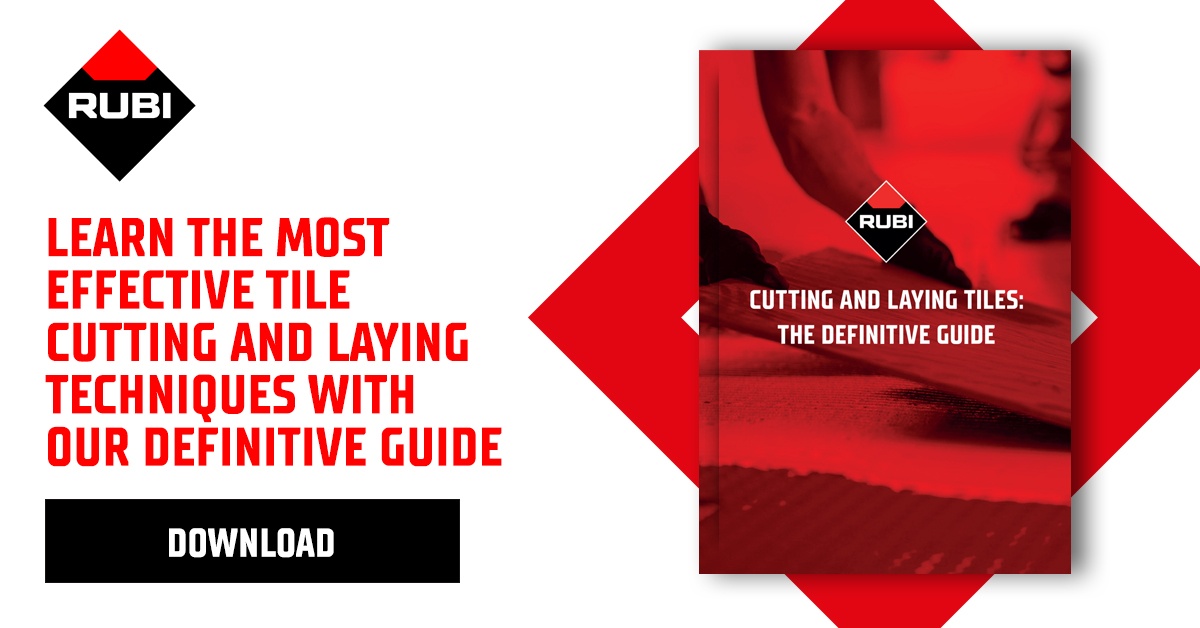

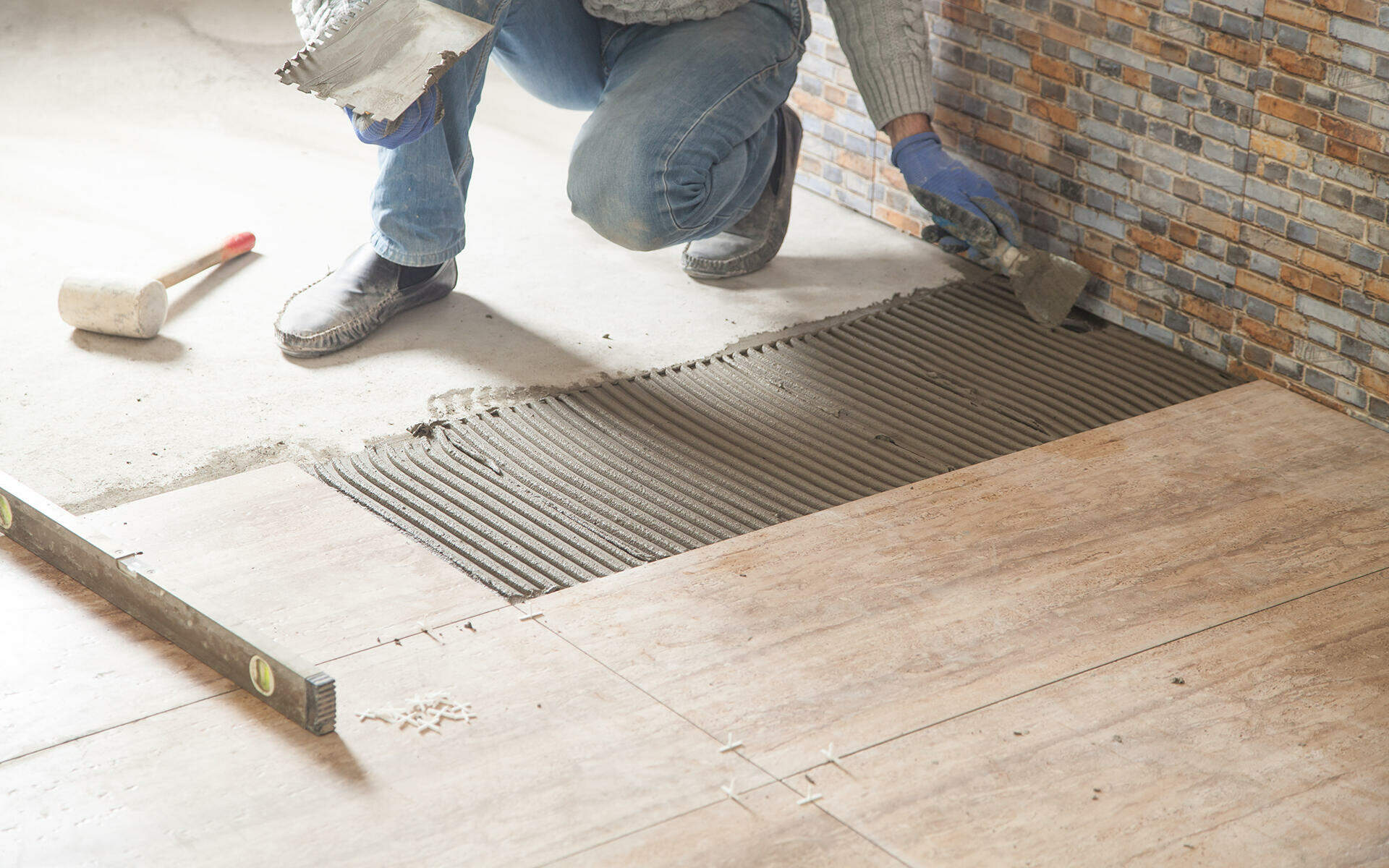
 Source: Prestige Floors
Source: Prestige Floors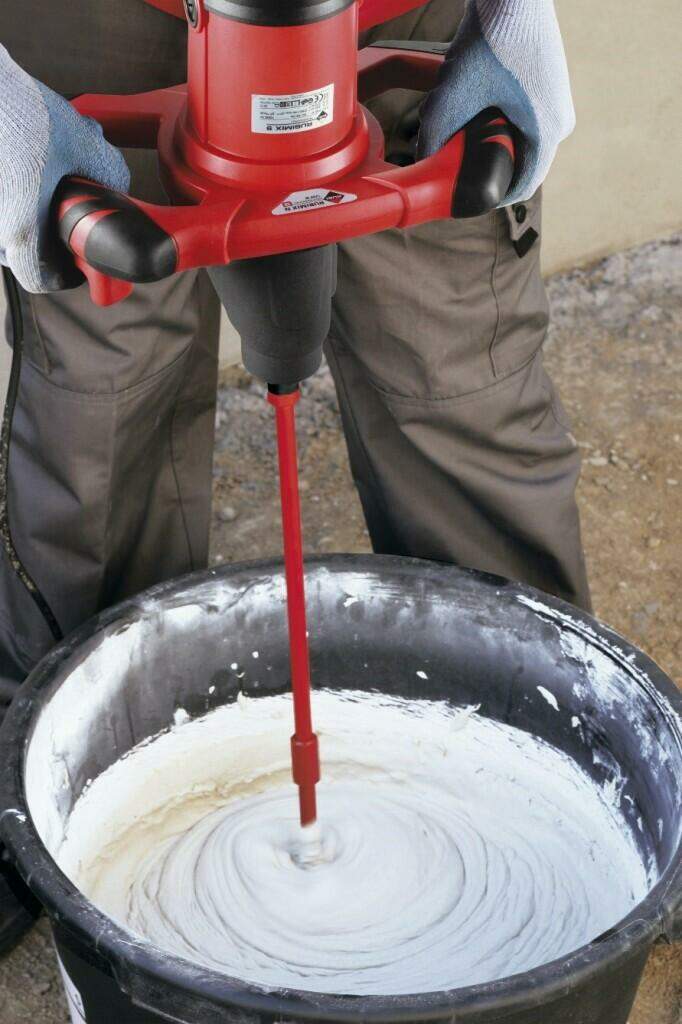
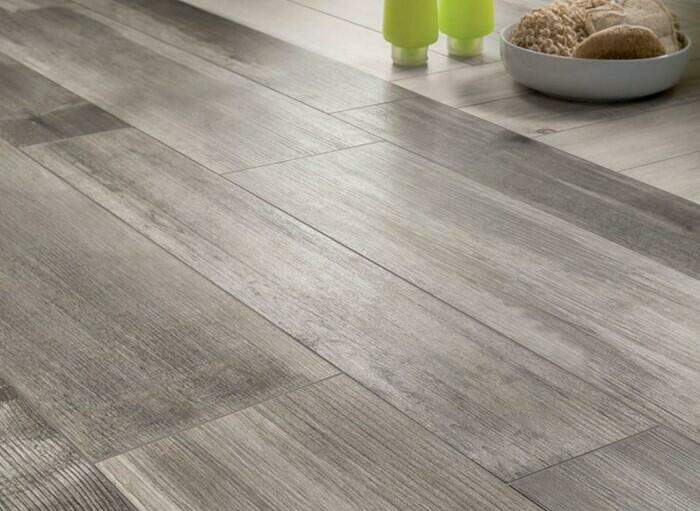
Thank you very much! Keep posting such info on your blog. I’m impressed by it.